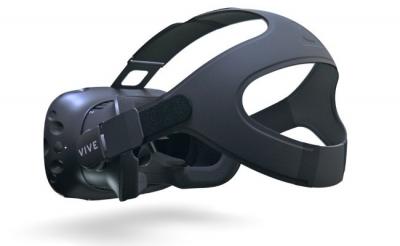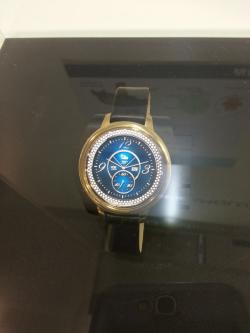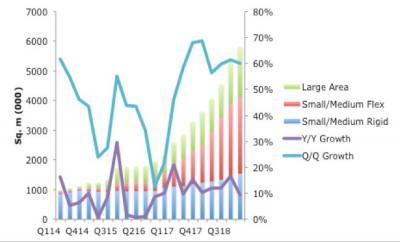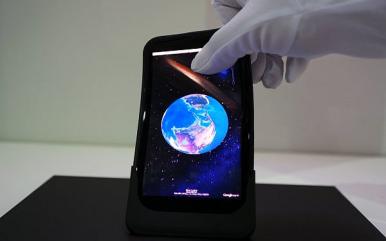 Taiwan's AUO (AU Optronics) was formed in 2001, by the merger of Acer Display and Unipac Optoelectronics. Later in 2006 AUO merged with Quanta Display. AUO is one of the world's largest producers of LCDs.
Taiwan's AUO (AU Optronics) was formed in 2001, by the merger of Acer Display and Unipac Optoelectronics. Later in 2006 AUO merged with Quanta Display. AUO is one of the world's largest producers of LCDs.
In 2006 AUO became the world's first AMOLED producer but in 2007 the company decided to shift focus back to LCD, and stopped investing in OLEDs.
In January 2008 AUO resumed their OLED operation, and after years of development the company started mass producing AMOLEDs again in 2014 at its AFPD fab in Singapore. Over the years AUO developed several innovative OLED technologies such as flexible and bendable panels, transparent OLEDs, OLED lighting, OLED TV panels, inkjet printing and more. In recent years, AUO has shifted its focus to microLED display technology as it cannot compete with leading OLED producers. The company, according to reports, may shut down its AMOLED AFPD fab and convert it to microLED production.
No. 1, Li-Hsin Rd. 2
Hsinchu Science Park
Hsinchu, 30078
Taiwan
Trendforce sees a VR AMOLED display market shortage in 2017
Taiwan-based TrendForce says that HTC is the current leader in VR headsets - with a market share of 61.4% between April 2016 and November 2016, but the Taiwanese company will not be able to extend its lead into 2017 as it will be hit the hardest from the OLED market supply shortage.

According to TrendForce, in 2017 HTC will ship 600,000 Vive units, while Sony will ship 2.5 million PlayStation VR units and Oculus is expected to ship 1.2 million units. Other brands, all combined, will ship 800,000 units. All of these VR headsets use OLED displays.
AUO: OLED shipments to double in 2017, but is taking a prudent approach
During AU Optonics' financial results conference call, the company's Chairman and CEO Paul Peng said that he expects OLED shipments to double next year. AUO is still cautious about the OLED industry, though, and will refrain from large-scale investments in the near term.

The reasons given for AUO's prudent approach to OLEDs is first of all that the company is not sure it will have a good return on investment. Secondly, AUO says that it is not sure OLED quality is actually higher than LCD - but this seems to be a defensive stance, as OLEDs are widely regarding to be the best performing displays ever.
State of the AMOLED industry and future fabs
When Samsung started producing AMOLED displays in 2007, AMOLED technology was at a very early stage, immature, and Samsung took a huge risk. A few years later, this risk was rewarded with a successful display business and a boost to the company's smartphone business that was the first to adopt AMOLED displays.

Fast forward to 2016, and today Samsung is still the king of AMOLED displays, with a market share of over 95% in small/medium AMOLED panels. If we look at OLED TV production, then LG Display is the only commercial producer at this stage. But Samsung and LG are not alone - several companies in China and Taiwan already started mass producing AMOLEDs, and others have announced plans for large AMOLED fabs. In this long article we'll list all of these AMOLED producers and developers (over a dozen) - and details their current production capacity and rumored and confirmed production plans.
AUO demonstrates a 5" foldable AMOLED
AU Optronics demonstrated a new foldable touch-enabled AMOLED last week at Touch Taiwan 2016. This impressive display won the gold-panel award for 2016.
The display is 5" 1280x720 (295 PPI), and is only 0.1 mm with the in-cell touch layer. AUO says the panel withstands over a million folding cycles at a folding radius of 4 mm. The color gamut is 100% NTSC.
AUO's 3.8" 90Hz AMOLED for VR application now in production
Taiwan's AU Optronics is currently focused on VR, wearable and automotive applications for its AMOLED displays. The company recently announced it is developing 3.8" and 5.5" VR AMOLEDs, and today we learn that the 3.8" panel is now entering production.
The new panel features a resolution of 1080x1200 and a refresh rate of 90Hz. It is intended for VR HMD applications - which use two such displays, one for each eye (the Oculus Rift, for example, uses two 3.54" 1200x1080 90Hz AMOLEDs produced by SDC). More information on AUO's new panel can be found on the OLED Marketplace.
AUO reports a strong quarter, expects growth in OLED shipments
Taiwan's AU Optronics reported its financial results for Q2 2016. The display maker says that it saw strong demand for displays, including TV displays and the average panel price bottomed up in the quarter - and started to pick up. Revenues reached $2.5 billion and gross profit reached $175 million.

AUO's experienced growth in both OLED client number and projects number. The company expects to ship over a million OLED panels in Q3 2016. AUO is focused on OLED for VR application and the company produces 3.8" (1080x1200) and 5.5" VR OLEDs, reaching a high 420 PPI. AUO also develops OLED displays with higher resolution - larger than 600 PPI, aiming to bring this into mass production as soon as possible.
IHS: 90.8 million AMOLED panels shipped in Q1 2016
IHS estimates that 90.8 million OLED panels shipped in Q1 2016, and most of these (87.35 million) used in smartphones. 2 million panels were used in smartwatches. IHS also estimates that 145,000 OLED TVs shipped in Q1 2016 (a decrease from the 200,000 panels shipped in Q4 2015).

OLED adoption in smartphones increased by 62.8% compared to Q1 2015. The increase in OLED shipments to smartphones were mostly due to new (most Chinese) smartphone makers using OLED displays. SDC is still the clear OLED leader, with a market share of 97.7%. LGD follows with 0.9% and AUO with 0.7%.
AUO is cautious about OLED investment, sees a possibility of over capacity by 2018
Taiwan's AU Optronics is producing AMOLEDs in its small line in Singapore, focusing on wearable displays. AUO's Chairman and CEO, Paul Peng, says that the company will take a "cautious attitude" towards OLED investments as it wants to make sure that these investment will be profitable. AUO sees a large increase in OLED capacity in 2018 (mainly from China-based players) - but its not clear if there will be enough OLED demand.

Reports say that AUO is also thinking about producing OLEDs in its upcoming LTPS line in Kunshan, China - but it seems that the company is still debating whether this is a wise move. The company is still developing OLED technologies of course - mainly OLEDs for VR and flexible OLEDs.
The OLED Association release their OLED market forecasts for 2014-2018
The OLED Association posted an interesting story detailing their forecasts for the OLED market's growth between 2014 and 2018. In the bottom line, the OLED-A expects the OLED market to grow at a CAGR of 22% in that period. Capacity will grow from 1 million sqm in 2009 to 6.8 million sqm by the end of 2018.

The small/medium non-flexible OLED segment is seen as stagnating in 2016, with a relatively modest growth starting in 2017. Overall growth will be 7% CAGR in 2014-2018 as many small players will grow their capacity (but will not reach large volumes) or enter the market and it seems that SDC will not increase production by much. In 2018 nine companies will produce small-sized rigid OLEDs, led by Samsung (62%), JDI (8.8%), AUO (8.3%) and LGD (5.4%).
AUO shows new AMOLED panels, may start producing OLEDs in their upcoming Gen-6 LTPS fab in China
AU Optronics announced several new display products, including some new OLED panels - a 12.3" Full-HD AMOLED display, a foldable AMOLED panel and OLED displays for smart watches and VR headsets.

The foldable panel features a thickness of only 0.1 mm and can be repeatedly folded over 200,000 times on a radius of 4 mm. This is an improvement of AUO's previous bendable panel (shown above) that was 0.2 mm thick.
Pagination
- Previous page
- Page 4
- Next page



